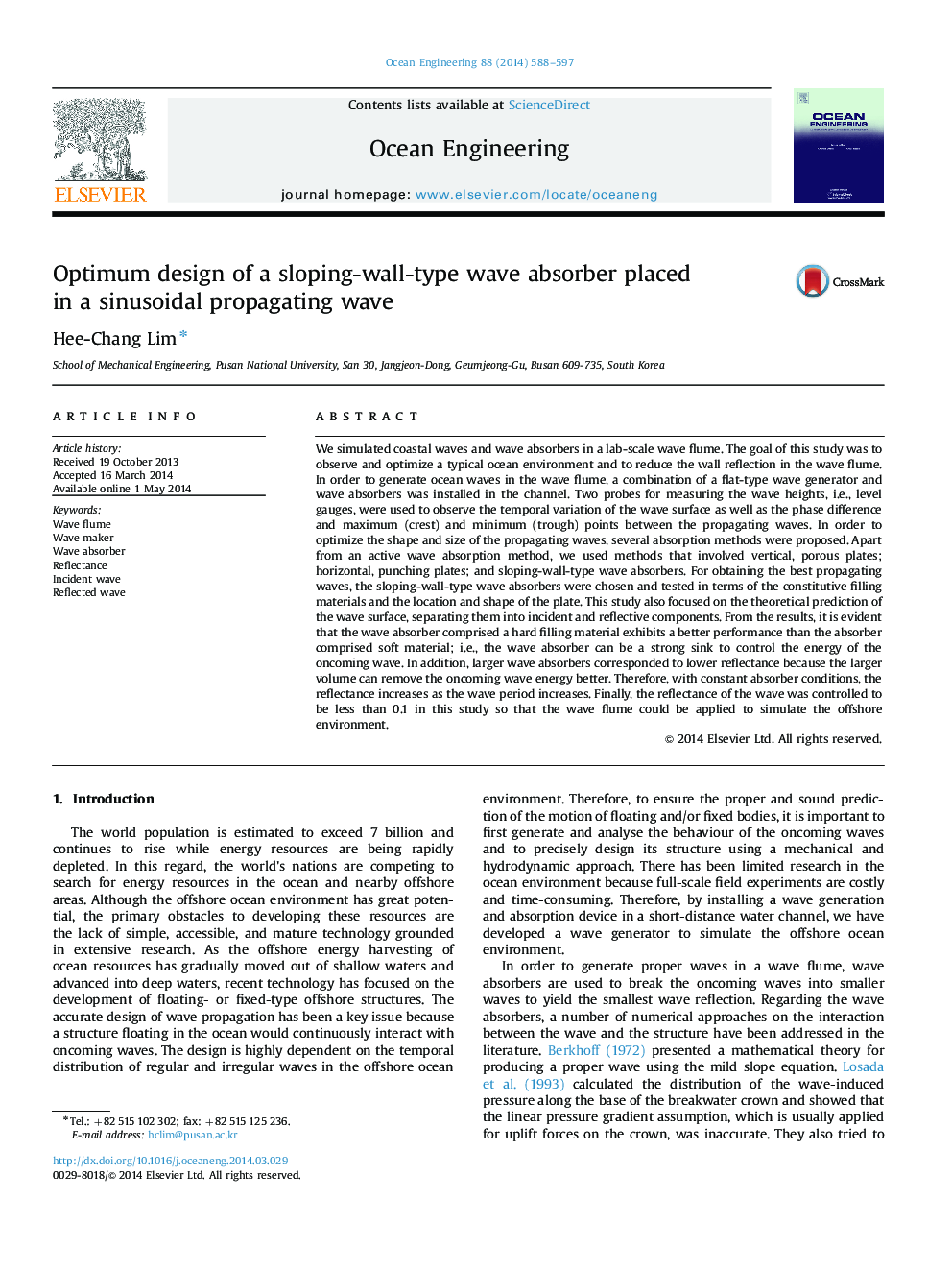| Article ID | Journal | Published Year | Pages | File Type |
|---|---|---|---|---|
| 1725646 | Ocean Engineering | 2014 | 10 Pages |
•We simulate coastal waves in a lab-scale wave flume.•We optimized a typical ocean wave environment.•Water flume measurements are carefully designed.•The reflectance of the wave was controlled to be less than 0.1.
We simulated coastal waves and wave absorbers in a lab-scale wave flume. The goal of this study was to observe and optimize a typical ocean environment and to reduce the wall reflection in the wave flume. In order to generate ocean waves in the wave flume, a combination of a flat-type wave generator and wave absorbers was installed in the channel. Two probes for measuring the wave heights, i.e., level gauges, were used to observe the temporal variation of the wave surface as well as the phase difference and maximum (crest) and minimum (trough) points between the propagating waves. In order to optimize the shape and size of the propagating waves, several absorption methods were proposed. Apart from an active wave absorption method, we used methods that involved vertical, porous plates; horizontal, punching plates; and sloping-wall-type wave absorbers. For obtaining the best propagating waves, the sloping-wall-type wave absorbers were chosen and tested in terms of the constitutive filling materials and the location and shape of the plate. This study also focused on the theoretical prediction of the wave surface, separating them into incident and reflective components. From the results, it is evident that the wave absorber comprised a hard filling material exhibits a better performance than the absorber comprised soft material; i.e., the wave absorber can be a strong sink to control the energy of the oncoming wave. In addition, larger wave absorbers corresponded to lower reflectance because the larger volume can remove the oncoming wave energy better. Therefore, with constant absorber conditions, the reflectance increases as the wave period increases. Finally, the reflectance of the wave was controlled to be less than 0.1 in this study so that the wave flume could be applied to simulate the offshore environment.
